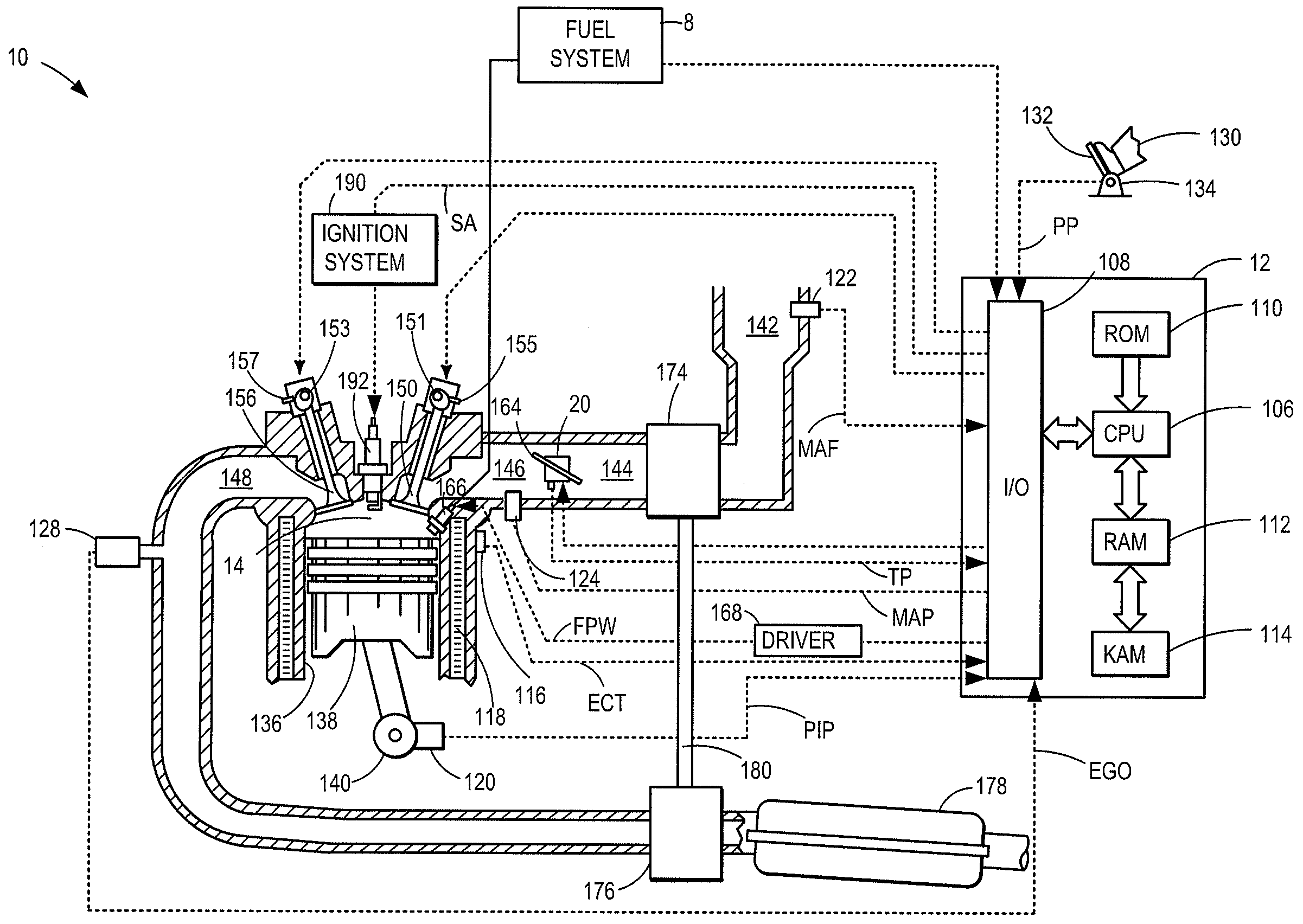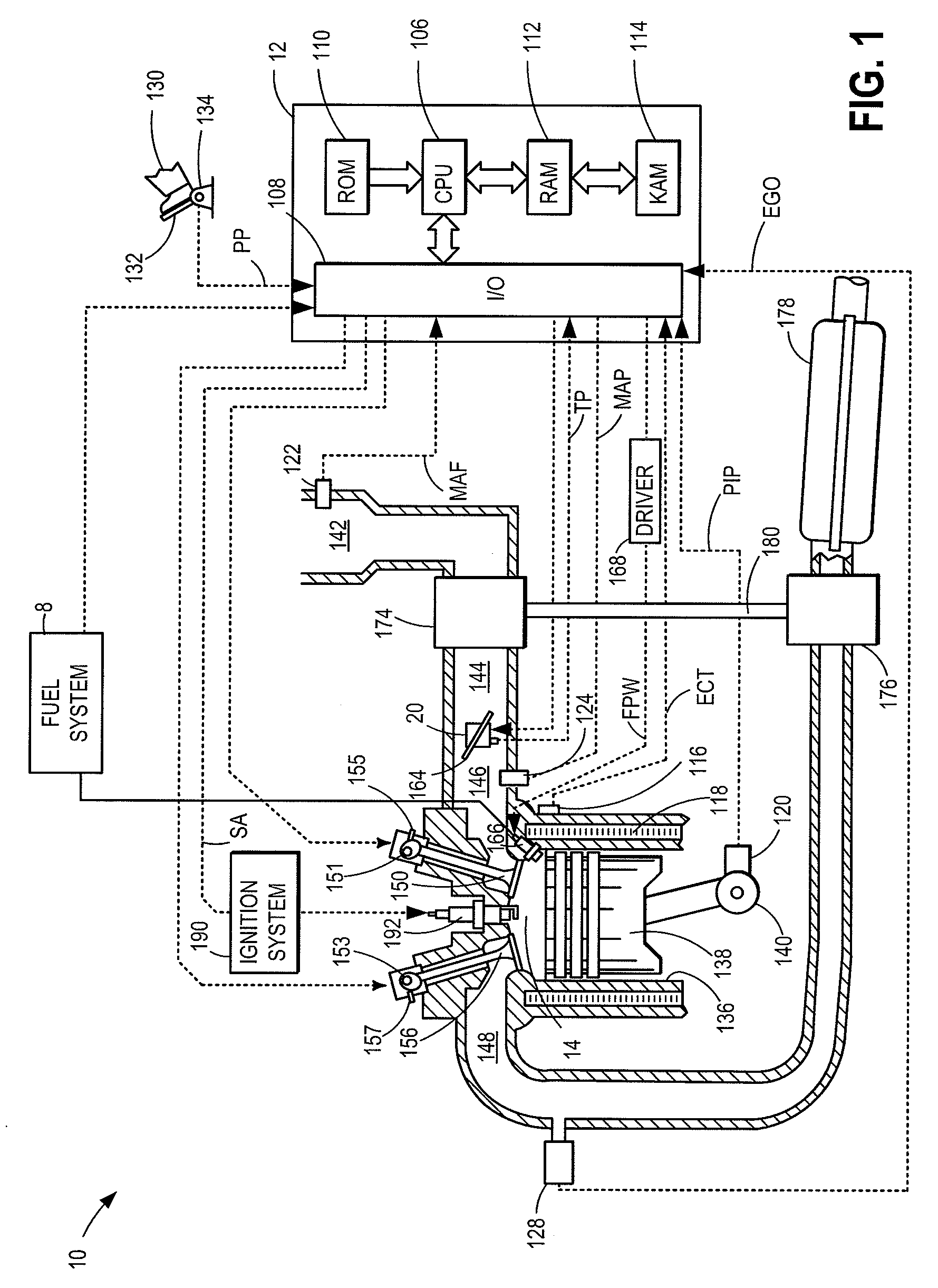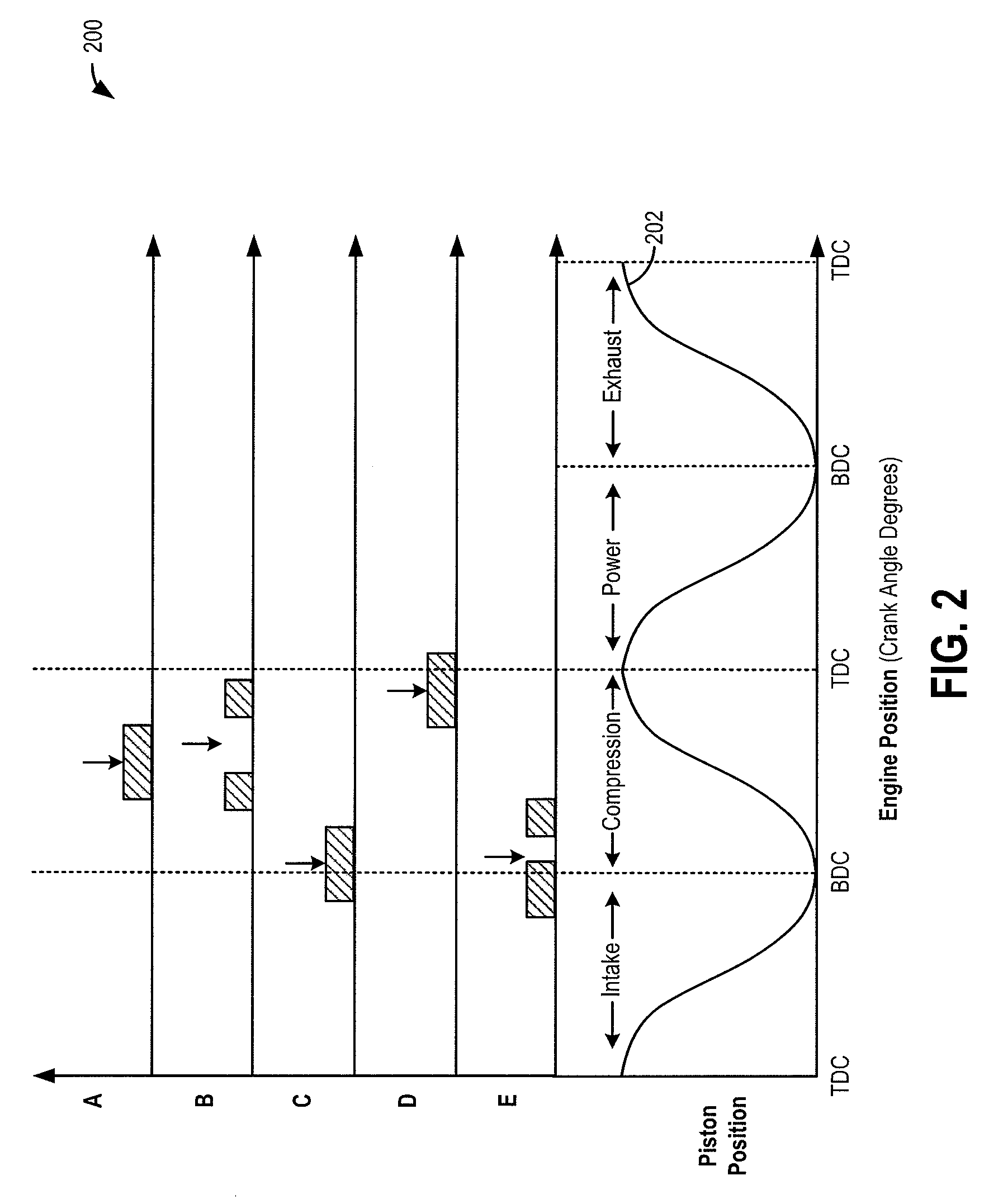[0003]One example approach to control alcohol-fuelled engines is described by Brehob in U.S. Pat. No. 7,287,509. Herein, the injection timing of a directly injected
alcohol fuel is adjusted to take
advantage of the increased charge cooling effects of the
alcohol fuel's higher heat of
vaporization and increased
octane. Specifically, the injection timing of one or more direct injections is advanced with increased alcohol in the fuel to take
advantage of the higher latent
enthalpy of
vaporization of alcohol and to allow more time for
vaporization. By advancing the injection timing, the intake
system is cooled to enable the
charge density that can be rammed into the
combustion chamber to be increased. Overall, the charge
cooling effect of the alcohol fuel is used to improve the peak torque output of the engine.
[0004]However, the inventors herein have recognized potential issues with such an approach. In one example, during an engine cold-start, when the temperature conditions of the engine are already not hot enough for an efficient combustion, advancing the injection timing responsive to an increase in fuel
alcohol content may further cool the system and significantly reduce the efficiency of fuel
evaporation and the formation of a homogeneous air-fuel mixture. The larger amount of time required to evaporate the fuel may degrade engine startability. Additionally, the charge
cooling effect of the alcohol fuel on the intake system may further lower the air-charge temperature at cold-start conditions thereby further degrading combustion stability and increasing potential for engine misfire. As such, this may lead to reduced fuel economy and degraded cold-start exhaust emissions.
[0007]In one example, when operating with a fuel-blend with a lower percentage of alcohol (such as E10, which has 10%
ethanol and 90%
gasoline), the compression injection timing may be less retarded (that is, the injection timing may be less close to TDC of the compression
stroke than to BDC). In another example, when operating with a fuel-blend with a higher percentage of alcohol (such as E85, which has 85%
ethanol and 15%
gasoline), the compression injection timing may be more retarded (that is, the timing may be moved closer to the TDC of the compression
stroke). Additionally, to improve the atomization of the alcohol-based fuel, the fuel
rail pressure may be raised with increasing alcohol content of the fuel. Further, to reduce potential over-pressure related issues, multiple compression fuel injections may be performed, the number of injections increased with the increasing alcohol content of the fuel.
[0008]By performing compression direct
fuel injection, a higher air-charge temperature and higher valve temperature of the engine cylinders during the compression
stroke may be advantageously used to more effectively evaporate the directly injected alcohol fuel. Since alcohol is a relatively low volatility fuel, by retarding the compression injection timing as the fuel alcohol content increases, the alcohol may be exposed to higher air-charge temperatures, thereby better enabling efficient
evaporation and formation of a homogenous air-fuel mixture. In this way, the startability of alcohol-fuelled engines may be improved. Additionally, by evaporating most of the injected fuel, less fuel may be lost during engine operation, and the need for larger or
pilot fuel injections at engine cold-start may be reduced. As such, this may provide fuel economy benefits as well as reduced cold-start exhaust emissions.
 Login to View More
Login to View More  Login to View More
Login to View More 


